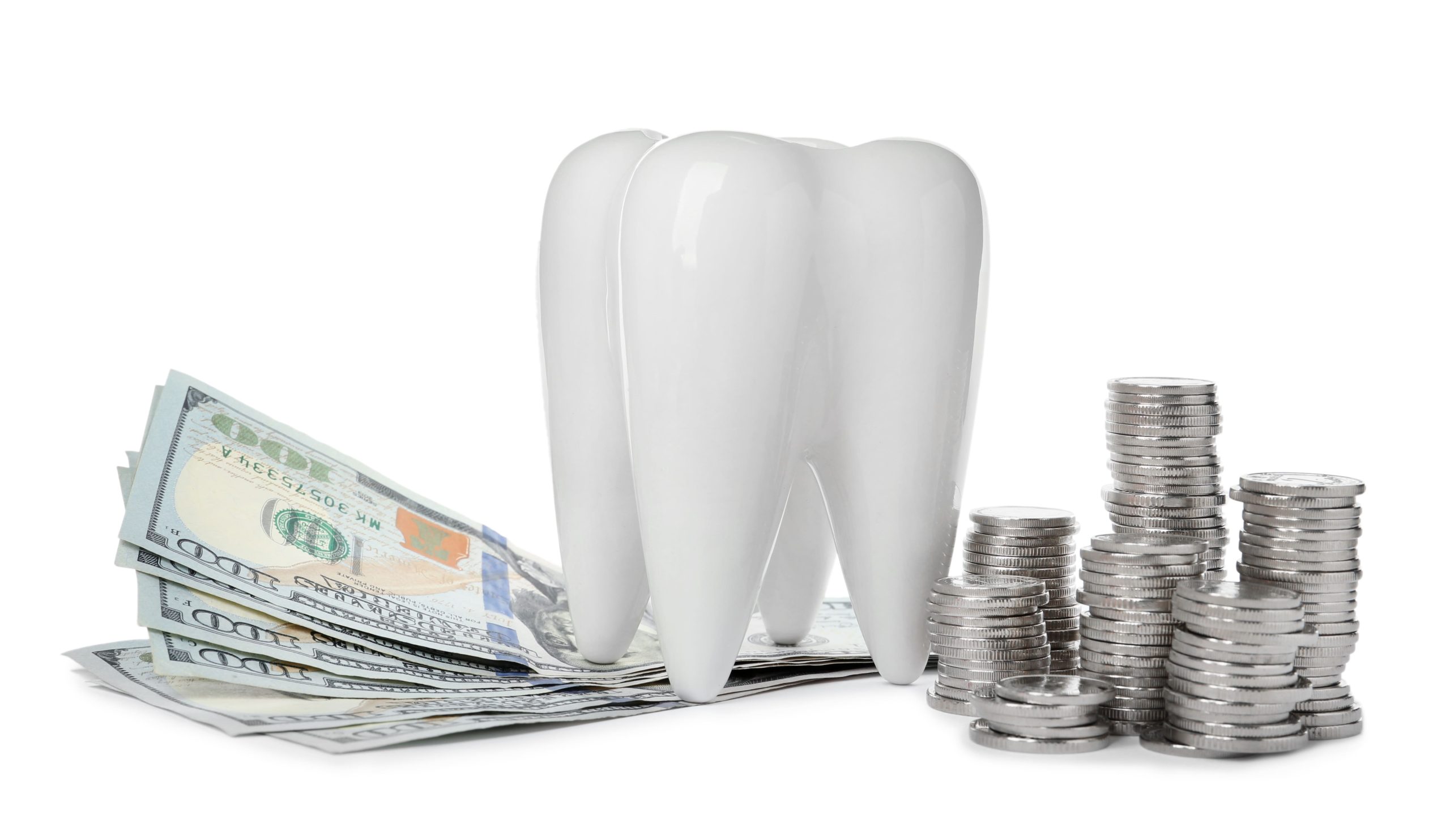Last updated on November 28th, 2025 at 07:06 pm
Last updated on November 10th, 2025 at 04:55 pm
 This article is the fifth and final installment on how to increase practice profitability and manage overhead. To view the first four parts, please go to:
This article is the fifth and final installment on how to increase practice profitability and manage overhead. To view the first four parts, please go to:
Managing Your Overhead and Profitability, Part I, What is Your Overhead?
Managing Your Overhead and Profitability, Part II, Overhead Guidelines
Managing Your Overhead and Profitability, Part III,< Payroll Expense in a Dental Practice
The last two issues focused primarily on the overhead categories that tend to cause the most trouble. Up to now, we’ve covered payroll, associate compensation and how it relates to your payroll percentage, leases and dental supplies.
We’ll wrap up the series with a look at the overhead categories of lab and advertising, and look at some suggested steps to take overall, depending on your current situation.
Lab Bills
As we covered in the third installment of this series, lab bills should run at approximately 8-10% of your collections. Years back I remember the industry standard was 10%. In my experience, it can be less, hence the 8%. More than 10% can be downright unhealthy.
To calculate your lab percentage, you might want to use three-to-six-month averages (i.e., for your total lab bills and total collections). Using less can really skew your percentage one way or the other.
 For offices that pay more than 10% of their collections for lab, the usual culprits are:
For offices that pay more than 10% of their collections for lab, the usual culprits are:
- You’re a prosthodontist.
- Fees are too low.
- Too many reduced fee, PPO or HMO plans.
- Collection percentage is poor.
- The other areas of your practice are underperforming.
I’ll comment on each in sequence.
1. Fees are too low.
Regardless of what you charge for a crown, bridge, denture or partial, your lab fee will be fairly fixed. Of course, some crowns cost more than others, but I believe the point is made. One work around here is finding a cheaper lab. I’m not in love with that idea, but clinically, you’re the boss. For me it’s simple: If you’re happy with your lab or labs that you use—why change? Ultimately, the most important aspect of your practice is patient care and clinical excellence. If you change labs because you can get the same or better quality at a cheaper price somewhere else—I can understand—it’s a business decision.
If you’re changing labs because you need something cheaper and as a result lower your clinical standards…well…not a good idea. Why? It flies in the face of everything a dental office—or any health care practitioner—should stand for: what’s best for the patient.
Instead, if you have a great lab that you’re working with and their fees are high, realize that their fees are high most likely because they are a great lab! They do good work. In this case, you may need to raise your fees.
Run the numbers. Check out some of those services or products out there that show various fee schedule percentiles by zip code and see where your fee falls. If yours is too low, you might want it raised.
2. Too many reduced fee, PPO or HMO plans.
Let’s say your fee for a standard crown (semi-precious or high noble) is $1,000 (could be higher or lower—just using a simple figure as an example). Chances are this fee allows for moderate profit and an acceptable ratio to your lab bill for said crown. But you’re in a few PPOs and your average PPO fee for a crown is $600. That’s a 40% or $400 write-off! The lab bill for the “PPO” crown and fee-for-service crown are the same. For that matter, I have yet to see a lab that asks if the crown you’re prescribing is for a PPO or HMO patient so they can give you an applicable discount. Why? Just like you—their costs don’t change just because your fee did. The only one eating the write-off here is you. The expenses associated with prepping and delivering the crown (i.e., staffing, and other office expenses) are the same. You’re just charging less.
Here’s where the fun begins. Let’s look at just the lab expenses associated with a crown. Let’s say for our example above your lab charges $200. OK, for the $1,000 fee, this is 20%. On the other hand, it’s 33.3% of the $600 crown. So, who loses here? Again—you. The lab bill, staff and other expenses with producing this crown are paid for first—you’re just getting less on the back end.
Just by the math above, you could see that if you’re doing loads of discounted crown and bridge, your lab bill—as a percentage—would be higher.
So, backing this up, why are you writing this $400 off in the first place? Simple, so you’ll be listed in that PPO’s directory and as a result get more patients. For all intents and purposes PPOs and HMOs are marketing plans. And your write-off is the “marketing fee.”
While some PPOs do have acceptable fee schedules, many don’t. And, in the main, HMO can be downright horrible.
Chances are, using the example above, the doctor who’s writing 40% off of his or her crown fee is writing a similar amount—or more—off of other procedures. They are in a sense spending 40% (or more) of their fees from these PPO patients on “marketing.”
Any way you slice it, 40% is a heck of a lot to spend on marketing. For that matter 30% or 20% is pretty high! Chances are that if this doctor knew how to market correctly, he or she could spend far less for more new patients, making participation in PPOs like the above unnecessary. As a side note, if you’re interested in how to get more fee-for-service new patients, I’d suggest that you look into the MGE New Patient Workshop.
3. Collection percentage is poor.
This is similar to the managed care scenario painted above. Whether a patient or an insurance company pays you (or not), the expenses (payroll, general office, supply, lab, etc.) associated with any given procedure stay the same.
In the dental business model, expenses increase based on the amount of office production—especially lab and supply expenses.
Let’s say an office produces an average of $100,000. Their average lab bill is $9,000. For whatever reason (sloppy financial arrangements, poor insurance follow-up, whatever) collections for this office run at 85%, or an average of $85,000 each month. Percentage-wise, lab runs at 10.5% for this office ($9,000 divided by $85,000).
Let’s say the office collected at a more acceptable level. And while it should be higher, let’s say this office ran at 95% collections or $95,000 per month. Well, now lab percentage falls to 9.5%—back in range.
4. The other areas of your practice are underperforming.
This one takes some explaining. When corrected, however, your profit and overall practice performance can really soar.
I’ll illustrate with an example:
Dr. Smith is a very skilled and productive dentist. Most of the procedures he performs involve a lab fee. He’s booked out weeks in advance. To get on his schedule for basic procedures (composites, etc.) could take up to three or four months – there’s just no time in the schedule. And very little time is allocated for this type of work. The numbers work out like this:
Monthly Production:
Dr. Smith: $80,000
Hygiene: $10,000
(6 Days, 1 FT and 1 PT Hygienist)
Office Total: $90,000
Lab Bill $10,000 per month—11.11%
So, what’s the problem? In this case, Dr. Smith is so booked out that he most likely could use an associate. As most of what he does includes a lab fee (crowns, bridges inlays, etc.), his lab bill is high. Most of the “lower end” dentistry has to wait months and months to get done. Additionally, Hygiene is really under-producing.
From afar, he seems like he’s doing pretty well and in fact he is fairly productive. But again, his lab bill is high—as a percentage.
Let’s say Dr. Smith just straightened out his hygiene production and brought it more in range—which at the low end with 6 days of hygiene would be for our example $25,000. Here are the numbers:
Dr. Smith: $80,000
Hygiene: $25,000
(6 Days, 1 FT and 1 PT Hygienist)
Office Total: $105,000
Lab Bill $10,000 per month—9.52%.
Dr. Smith lowers his lab percentage by addressing an area of the practice that has nothing to do with his lab bill—hygiene.
You could expand on this scenario. Patients are booked way out, so Dr. Smith adds an associate to expand and improve service. The associate works up to $30,000 per month pretty quickly doing procedures with no lab fee (composites and the like). Now our lab percentage drops even further. And, don’t forget as we covered in our last issue, freeing Dr. Smith’s schedule up with an associate should drive Dr. Smith’s personal production even higher (maybe into the $100,000 per month range).
5. You’re a prosthodontist.
If you specialize in prosthodontics, i.e., your practice is composed primarily of patients referred by GPs, your lab bill would most likely exceed 10%. This would be expected. Most everything you do has a lab bill associated with it, and you wouldn’t have a hygiene department or an associate performing procedures with no lab fee to offset this.
I know I’m speaking to a small percent of the dental profession, but figured I’d add this, as it is after all a valid point.
Marketing, Advertising and Public Relations
I’m all for marketing your business. It makes sense and puts you in control of your new patient flow and income. This assumes of course that YOUR MARKETING IS ACTUALLY WORKING.
How do you know if your marketing is working? Simple: you’re getting an adequate response. Marketing won’t “get you more new patients.” It will get people to call your office. How you handle it from there also has a lot to do with whether your marketing is working or not.
While there are a number of reasons your marketing budget could go out of control, I’ve found, in my experience, three major reasons behind it:
- Contracting for marketing services that exceed what you should be spending based on your collections level.
- The marketing isn’t working.
- The “quality” of your marketing is exaggerated, resulting in less marketing potential.
Let’s have a look at each of these:
1. Contracting for marketing services that exceed what you should be spending based on your collections level.
This is pretty basic—and common. We’ll take a dentist, we’ll call her “Dr. Jones,” who’s collecting an average of $20,000 per month. She wants to increase productivity and new patients and decides to do some marketing. She signs a one-year contract with a marketing company for a marketing campaign to be done via mail and the internet. The cost is $5,000 per month (25%) which is way too high. She expects revenues to take off. They improve to $30,000 per month—not quite what she expected. Added to this, she finds out that this contract did not include postage costs for mailings (as this is paid to the US Postal Service), which is an additional $3,000 per month. Our total monthly marketing tab is running at $8,000 per month. With her $10,000 per month increase to $30,000, she’s still running in the 25% range (26.7% to be exact), which is way out of range.
The problem started with her initial monthly commitment, which should have been in the $2,000-2,500 range at the maximum—depending on her practice circumstances (i.e., new practice, established, etc.).
The moral? Marketing services can be great. Just ensure you understand all of the expenses associated with the marketing that you’ll be doing.
Now, I really didn’t break this down very much, but let’s say Dr. Jones had 1,500 charts and was getting 20 new patients per month. Sure she should be marketing, but with that many charts to collect $20,000 per month she has other problems—namely case acceptance, to start with.
2. The marketing isn’t working.
OK, this is pretty simple. You’re spending money on mail, a website, display ads, TV, radio, etc. but no one’s responding. As I mentioned earlier when referring to our first three Webletters on the subject of new patients, your problem might be internal. But nonetheless, spending money on marketing with no or little recompense isn’t going to work. Something has to change. And of course, this added marketing expense with no additional income will make marketing appear as a nasty “wart” on your overhead sheet, both as an amount and a percentage.
Now, I’ll say this as I’ve seen this messed up more times than not: The answer to “marketing isn’t working,” is NOT “stop marketing.”
Instead, the answer should be “do marketing that works!”
3. The “quality” of your marketing is exaggerated, resulting in less marketing potential.
This concept was a little difficult to put into one sentence. Let me explain. You decide to market for new patients in your local area. You design a beautiful brochure, envelopes, etc. The cost for each mailing (including postage) is $4.50. So, to reach 1,000 potential new patients it would cost $4,500. Now, I’m exaggerating a bit as I explain this, but my concept is simple: Yes, your promotion should be smart looking and high-quality, but don’t go overboard to the point where you can’t afford to do it in an effective quantity.
My thought process on this is usually pretty simple and I work promotion expense on an “inverse-ratio” based on to whom I’m marketing.
For example:
I’d spend the least per piece on mass mailing to potential new customers. This way I can get more out. Notice I didn’t say do something cheap or that looks bad. I just said this is where I’d spend the least per piece.
From there, I’d spend more on direct promotion to existing customers. As there are less of these than there are “non-customers,” or people who “aren’t customers yet.” For instance, you could spend a few bucks creating some beautiful promotional material for high end treatments at your office—i.e., implants, veneers, etc. I know some of these already exist; I don’t know whether they work or not (never really looked into them enough to be able to give you a real evaluation).
Using the above, just run the numbers. You could spend $4 a piece on a DVD and other promotional items promoting different types of cosmetic dentistry and send them to specific patients of record or hand them out in the office. How many would you—in reality—be giving out? Several hundred maybe? OK, let’s say you gave out 500 over the course of a few months. In that case we’re looking at $2,000 at $4 a piece. Not bad. And if it’s done well it should help to “sell” these services. Turn that around and you’d see that sending it to 10,000 potential patients in your area could get very cost prohibitive. In that case, you’d be better off spending .50 a piece max (including postage), for a nice newsletter, flyer, etc. You could hit more people.
I think I’ve hit the basic concept here.
Lastly, you might be well served to have your marketing budget carved out as a percentage. Then it grows as your office does and it begins to feed itself. More marketing should lead to more income, which would lead to more marketing money, which in turn should lead to more income and so on.
What to do now?
If you’ve made it this far (through all five of my newsletters) without excessive coffee or 100 ccs of adrenaline—I congratulate you. I know they’ve been long. I thank you all for reading, and your positive feedback and I hope they have been helpful.
OK, so if you’re ready to put some order into things financially, here’s a list of suggestions:
- Complete your overhead sheet. We detailed exactly what to do with it in Part II of this series.
- Work out your overhead percentage by using the average of your last three months of collections (divide overhead figure by collections).
- If it’s high, two things should happen:
- You need to increase collections. I’d suggest the MGE Communication and Sales Seminars along with the MGE New Patient Workshop.
- Compare your completed overhead sheet by category to the guidelines given in Part II of this series. Spot the areas which are out of control (i.e., too high).
- Suggestions about how to address high percentages in the categories of lab, supply, payroll, marketing & loans are covered in newsletters III—V.
- If you run into a particular issue that you’re having trouble with (i.e., not sure how to handle what you’ve run into or a high overhead category not covered in last few newsletters, etc.), feel free to email me at jeffb@mgeonline.com.
And with that I leave you to “get into action” on the subject. I wish you the best and again, feel free to e-mail me with any questions.
Jeffrey Blumberg provides this general dental practice management advice to furnish you with suggestions of actions that have been shown to have potential to help you improve your practice. Neither MGE nor Mr. Blumberg may be held liable for adverse actions resulting from your implementation of these suggestions, which are provided only as examples of topics covered by the MGE program.

